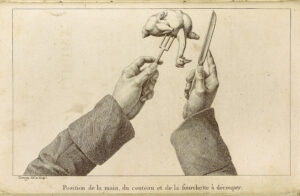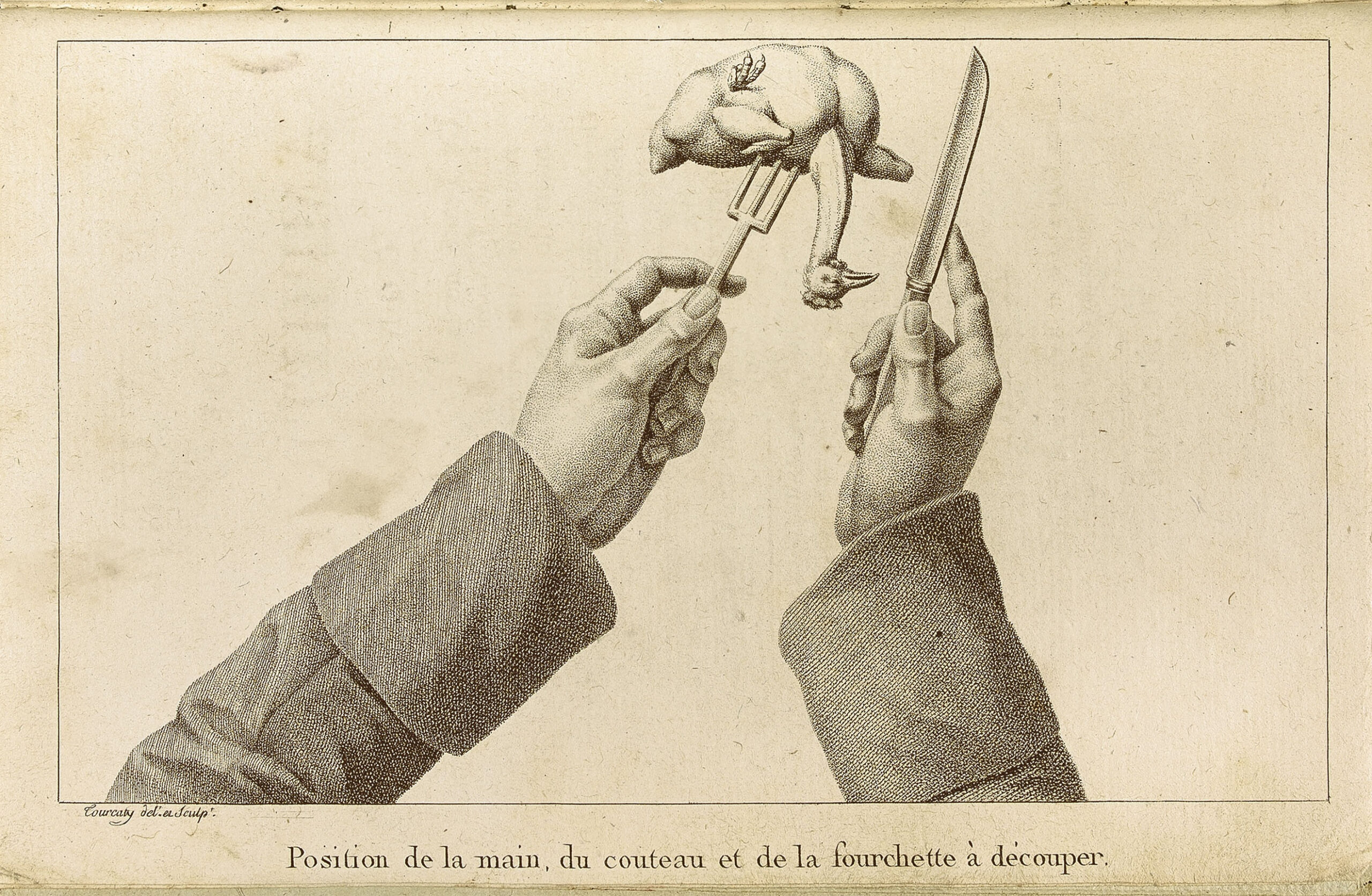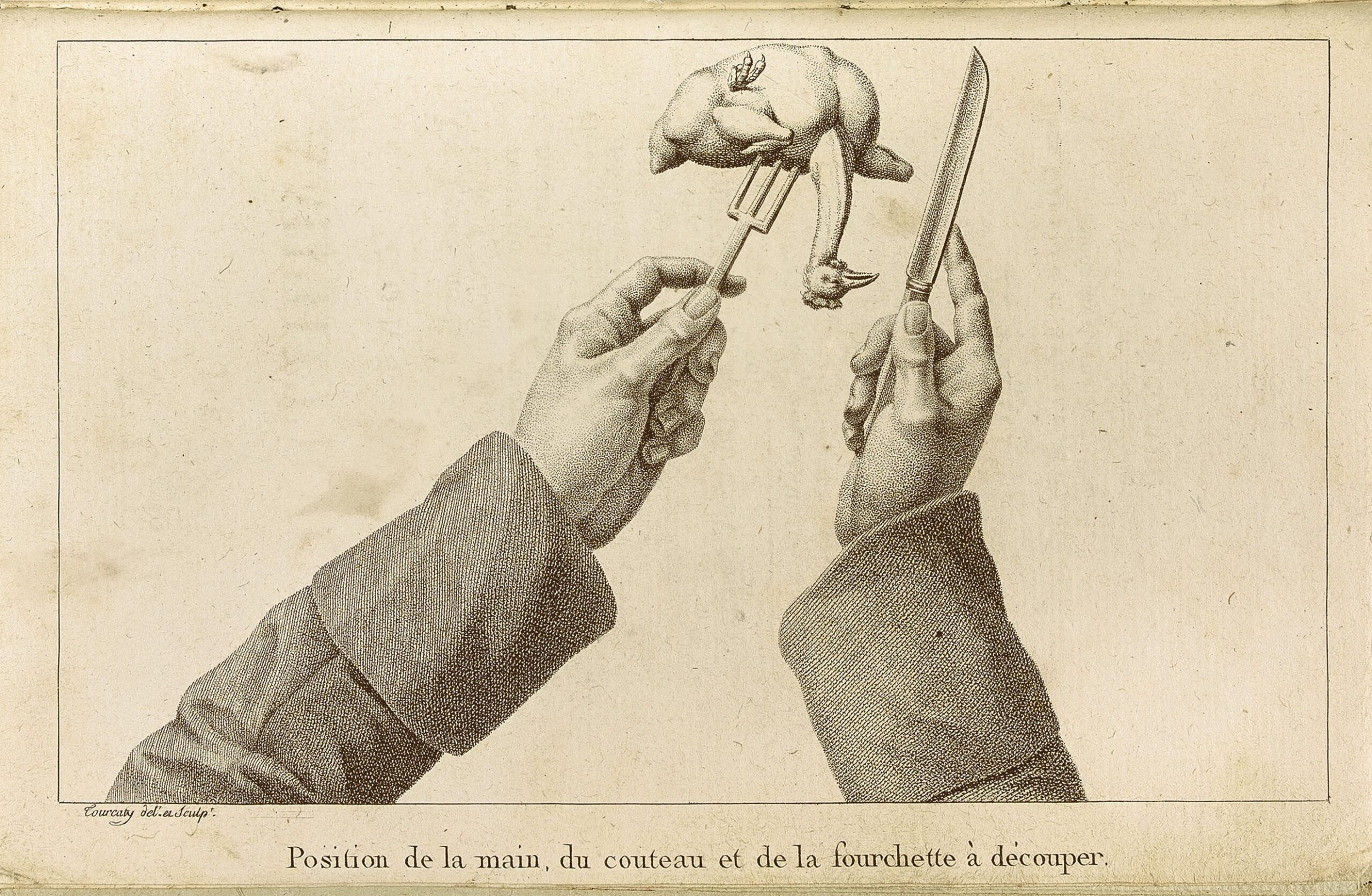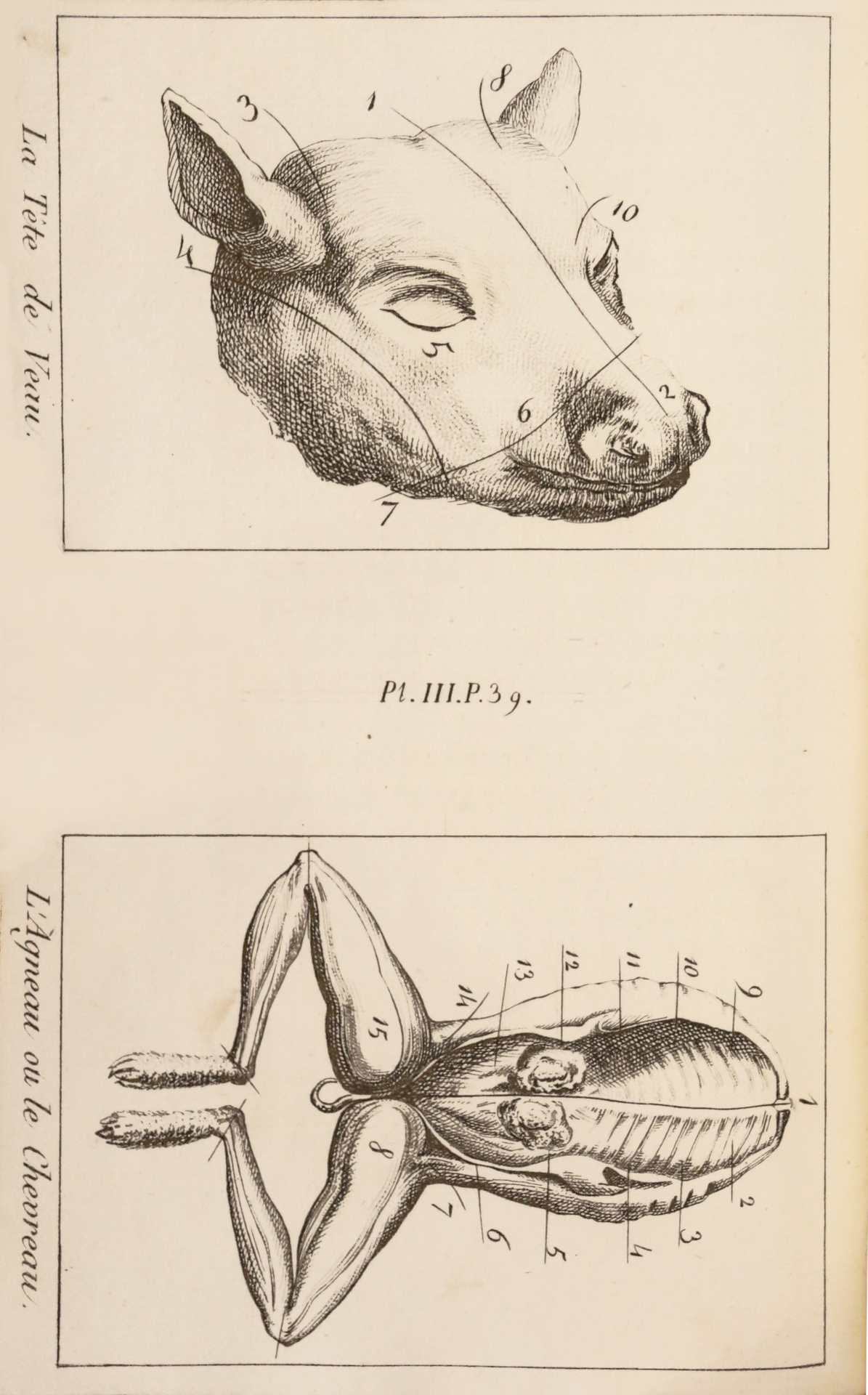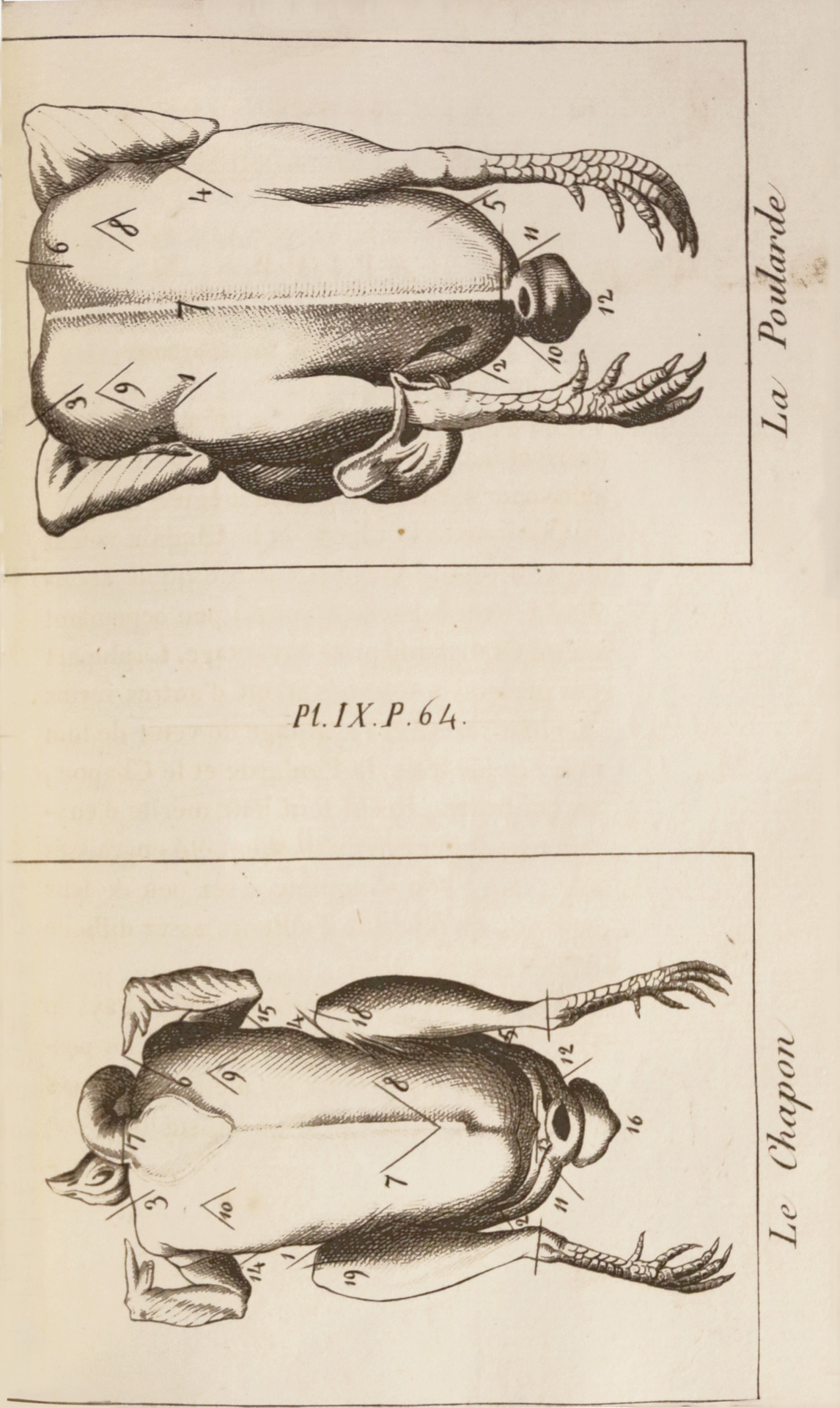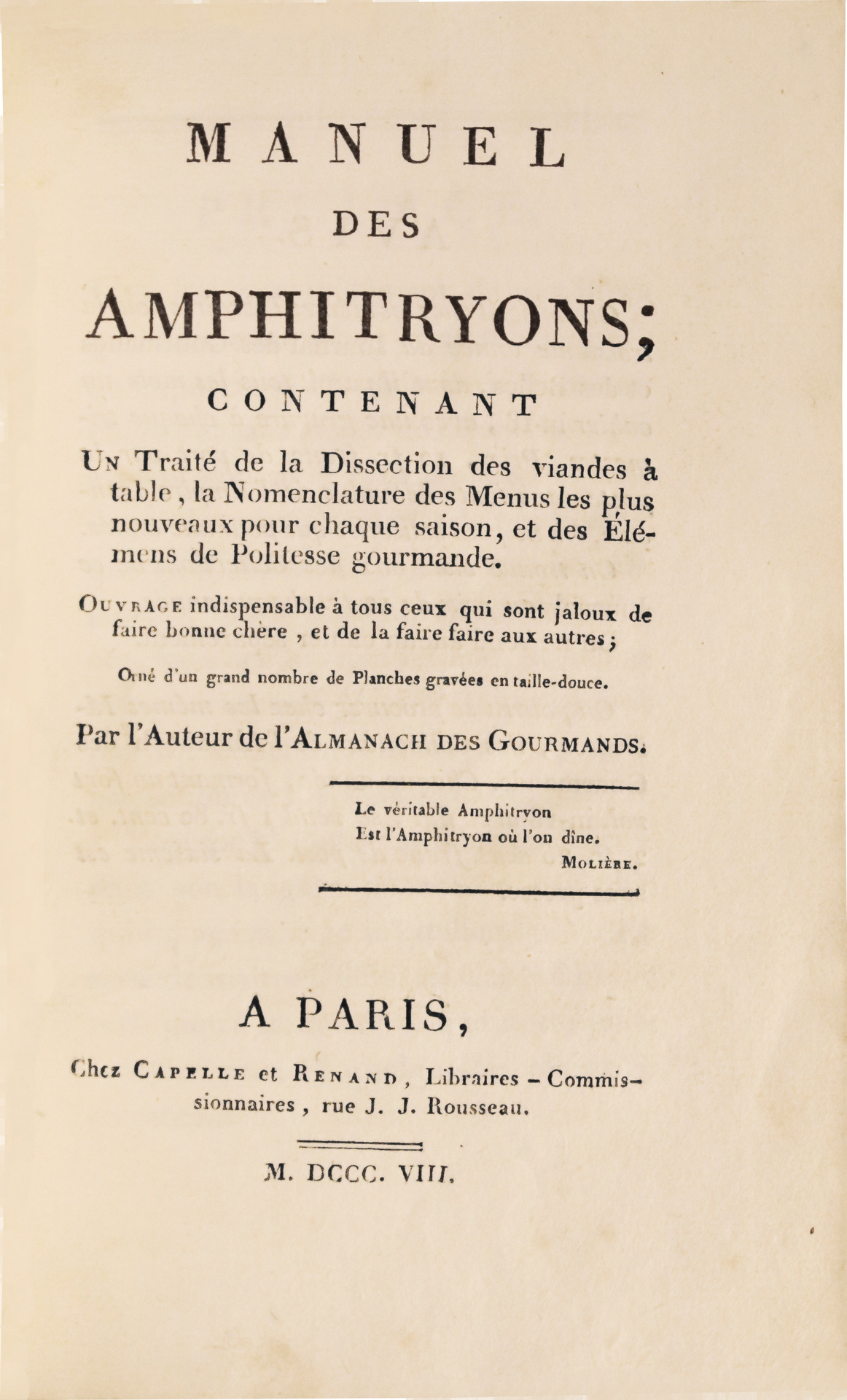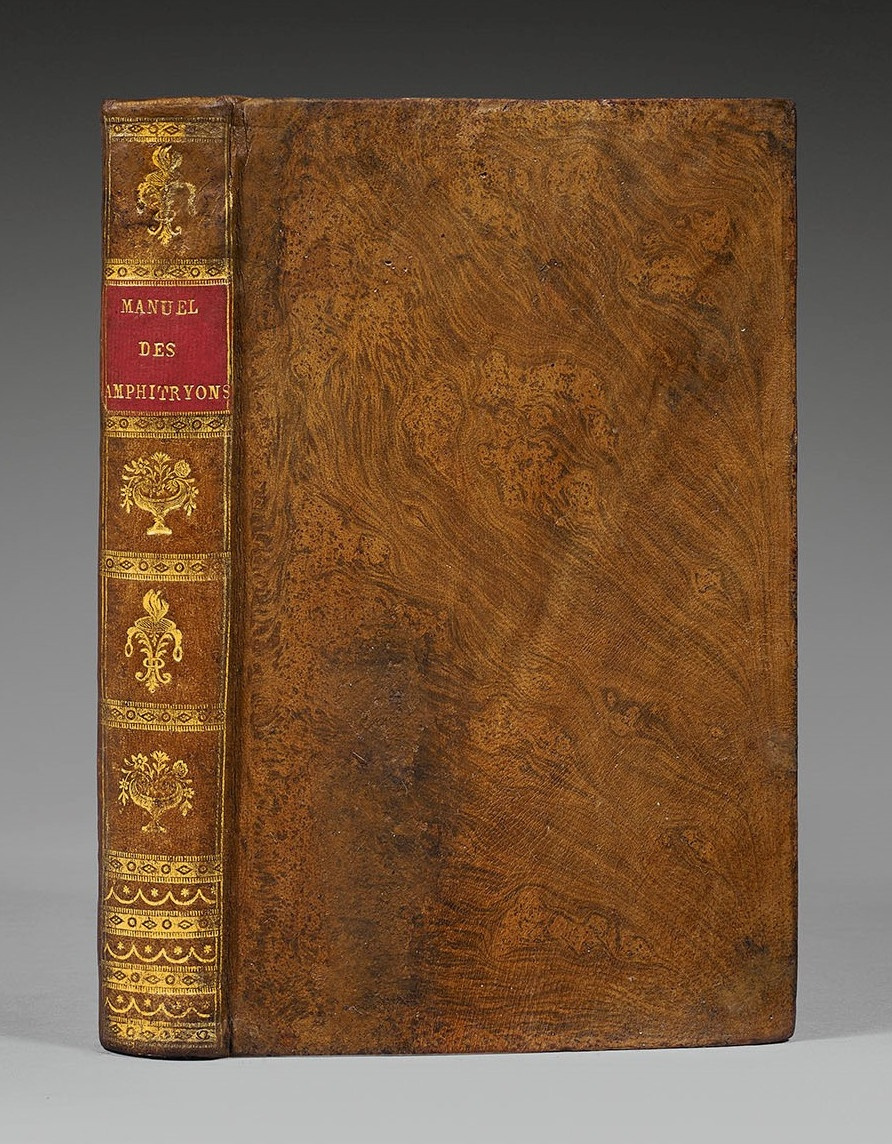Paris, Capelle et Renand, 1808.
8vo [194 x 125 mm] of 356 pp., 17 plates. Bound as usual at the time without the second table. Roan with a tree roots design, flat spine decorated with golden urns, old pink morocco lettering piece. Contemporary binding.
« Very sought after first edition ». (Gérard Oberlé, Les Fastes de Bacchus et de Comus, 135).
Vicaire 427 ; Simon 805 ; Bitting 203.
“Let’s leave the word to Ned Rival who, in his beautiful book about La Reynière, says: ‘This is in our opinion the best work of the gastronome. Less dependent on the news than the Almanacs, written peacefully, this book opens with an overview of the history of the table from the Ancients to the First Empire. The essential is brilliantly said in just a few pages that lead to this conclusion: fortunes having changed hands with the Revolution, we must teach the new hosts and their guests the great art of savoir vivre: “such a man who from lackey of a stockbroker, or speculator has become in a few years a millionaire, is unable to properly manage his kitchen and cellar. It is not enough to have spent his life rinsing glasses to be connoisseur “.
The impertinence of the tone did not upset the readers, none of them feeling concerned.
The book is composed of three parts. The first is a treatise of meat dissection. Knowing how to cut is indeed an essential knowledge: “We can compare a host who cannot cut to the owner of a beautiful library that cannot read.” The brief descriptions of the various pieces that can be presented under the knife of the master of the house, from beef to bustard or woodcock, are accompanied by intaglio engraved plates, reproductions of the illustrations made for the famous ‘Art de trancher la viande’ published by Pierre Petit, under Louis XIII.
The second part of the volume, for which the restaurateur Alexis Balaine provided his assistance, is a nomenclature of seasonal menus for 15, 25 and 60 cutlery … The elements of gourmand courtesy which conclude the volume form a code of civility from which some of our contemporaries could still benefit. (G. Oberlé).
“Grimod takes over many elements of l’Almanach and the Journal des gourmands. He wishes to remind a class of new rich people, born of the Revolution, the principles of civility of the past and the subtle art of cutting learnt from a young age. This is the first step, explained for each animal and accompanied by cooking tips and indications from suppliers. With this art one can be hosted everywhere.
The host must know how to choose his menu. With the help of the restaurateur Balaine, Grimod describes and discusses dinner menus of twenty-five, forty and sixty cutlery for each season, the whole along with anecdotes and useful addresses. The third part insists on the role of the host, but a small chapter which concerns the guest seems to have been taken out of the Traité of Antoine de Courtin. To conform to the new practices, Grimod describes how to serve coffee and liqueurs after the meal, to receive his guests in the living room, to put them at ease between them and to encourage conversation. He does not forget the cost of receptions and the principles of economy. The alphabetical and “sensible” table reflects the abundance of various and sometimes unexpected information in this well-constructed book, often with an impertinent tone. “.
The illustration consists of 17 plates out of pagination of the utmost interest as regards the dissection of meat and fish.
Precious copy of this very sought after work of gastronomy, complete with all its plates, preserved in its elegant binding in roan with a tree roots design.
